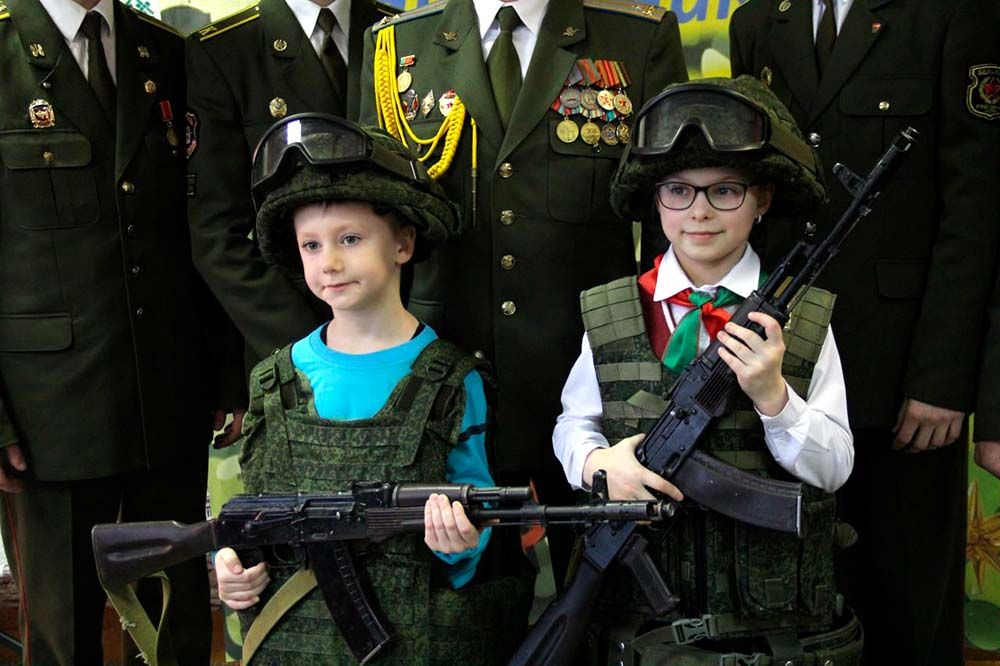The government is gearing up students for a potential Russia-NATO conflict
 The situation got worse
The situation got worse

According to Western intelligence, there’s a projected attack by Russia and Belarus on NATO’s “eastern flank” in 2025. At the same time, the government has rolled out a unique English language course called “Military Translation” for high school students, with the first big graduations coinciding with the hypothetical conflict’s kick-off.
Despite the peace-focused talk from the Belarusian military department and the call for NATO to engage in security dialogue, the government seems to be getting ready for a potential escalation of the Russian-Ukrainian conflict, potentially including a direct clash with NATO.
Apart from the continuous efforts of Belarusian and Russian propaganda to demonize and dehumanize the EU and NATO population, another sign of this preparation is an innovation by the Ministry of Education. They’ve introduced an elective course in English, “Military Translation,” for students in grades 10-11 in general education institutions. A similar program is implemented in secondary schools with cadet classes in Russia. After finishing the elective, Belarusian high school students should be adept at:
- Reading NATO combat documents in English and conveying their essence in Russian.
- Translating military and military-technical texts from English into Russian.
- Conducting two-way translation of a conversation or interrogation of a prisoner of war (interrogation of a local resident).
- Identifying military personnel of the US and UK Armed Forces by their insignia.
It looks like the “translators” will be needed pretty soon. According to Western military intelligence, Russia is expected to start gearing up for a direct clash with NATO as early as 2024. The Kremlin is expected to announce another wave of mobilization, conscripting an additional 200 thousand people into the army. Subsequently, Moscow will launch a spring offensive against Ukraine that could push the Ukrainian army back by June.
The initially covert and later overt Russian attack on the West is projected to begin in July. Russia plans cyber attacks and hybrid operations, mainly in the Baltic countries. Clashes will be used as a pretext for large-scale exercises in Russia and Belarus.
The escalation of this situation, according to Western intelligence assessments, may occur in October if Russia relocates troops and medium-range missiles to Kaliningrad and Belarus. From December 2024, an artificially induced “border conflict” and “unrest with numerous casualties” are expected in the “Suwalki Corridor” area. According to the scenario, at a time when the United States might be without a leader for several weeks after the elections, Russia, with the support of Belarus, will replicate the 2014 invasion of Ukraine on the territory of NATO’s “eastern flank” countries. In May 2025, NATO will decide on containment measures: on “Day X,” the organization will deploy 300,000 military Rapid Reaction Forces to the eastern flank and enter into direct military confrontation with Russian-Belarusian troops.
Thus, the first “mass” graduations of “military translators” from yesterday’s schoolchildren, now subject to military service, are precisely scheduled for 2024-2025 – the period of the hypothetical conflict between Russia and Belarus with NATO.
Subscribe to our newsletter




Situation in Belarus
Constitutional referendum: main consequences


 Video
Video
How to count the political prisoners: are the new criteria needed?


 Video
Video
Paternalism In Decline, Belarusian Euroscepticism, And The Influence Of Russia


 Video
Video












